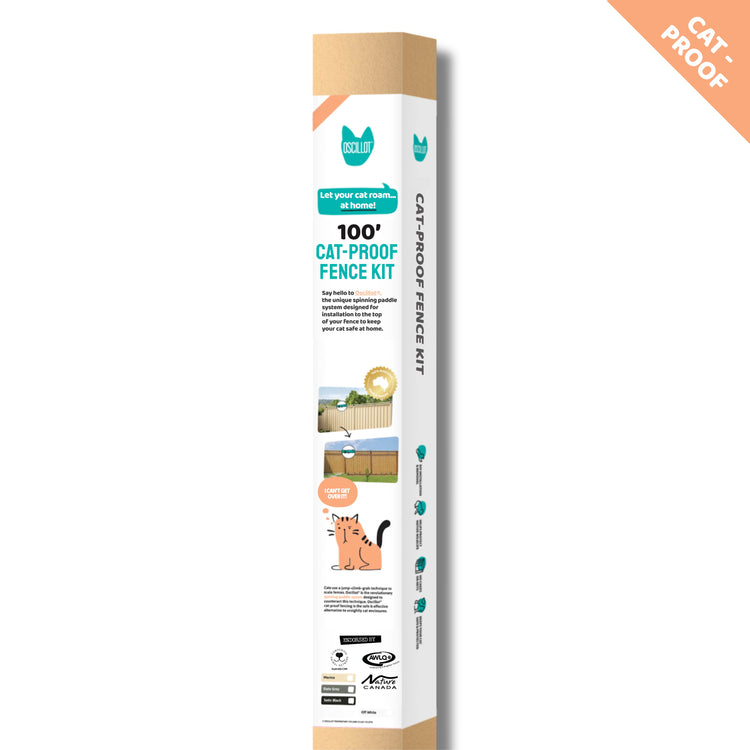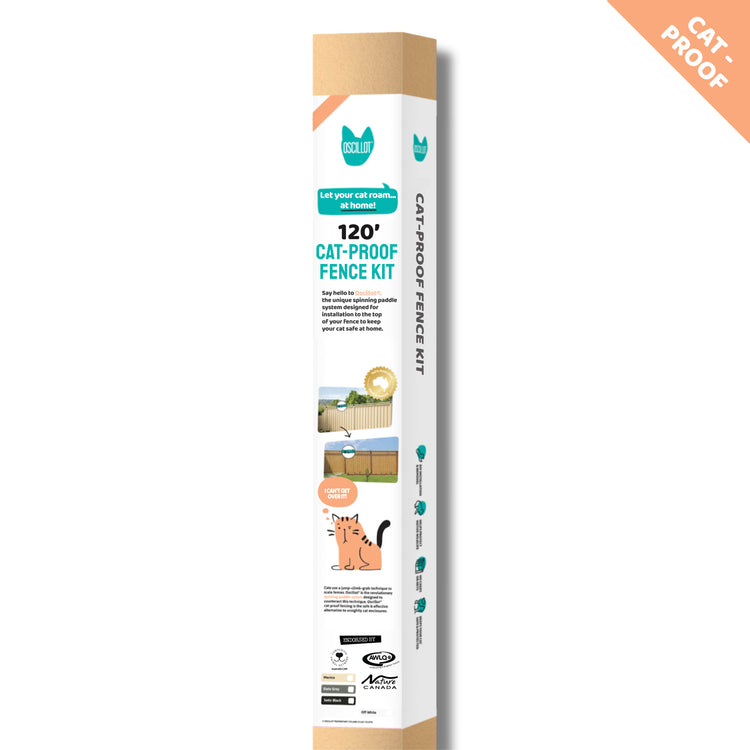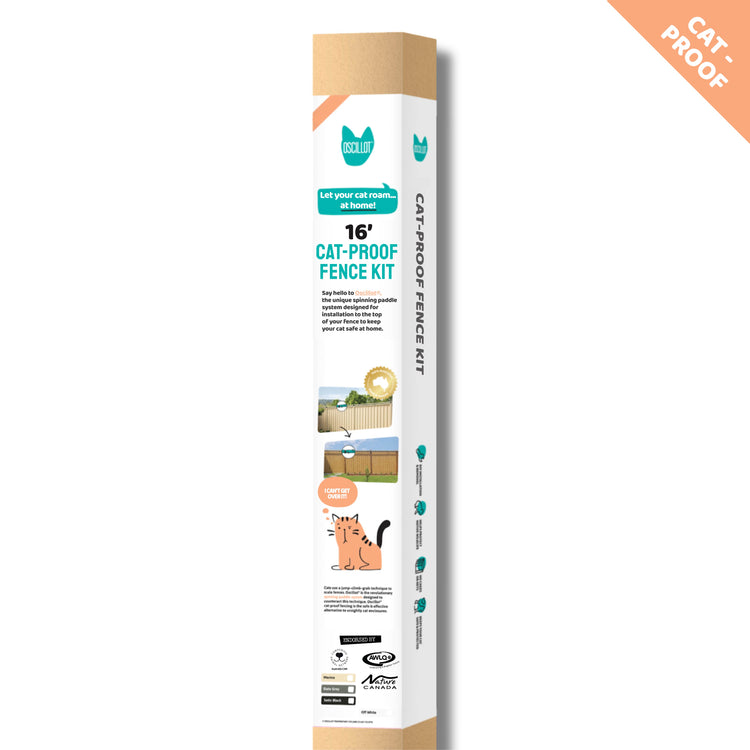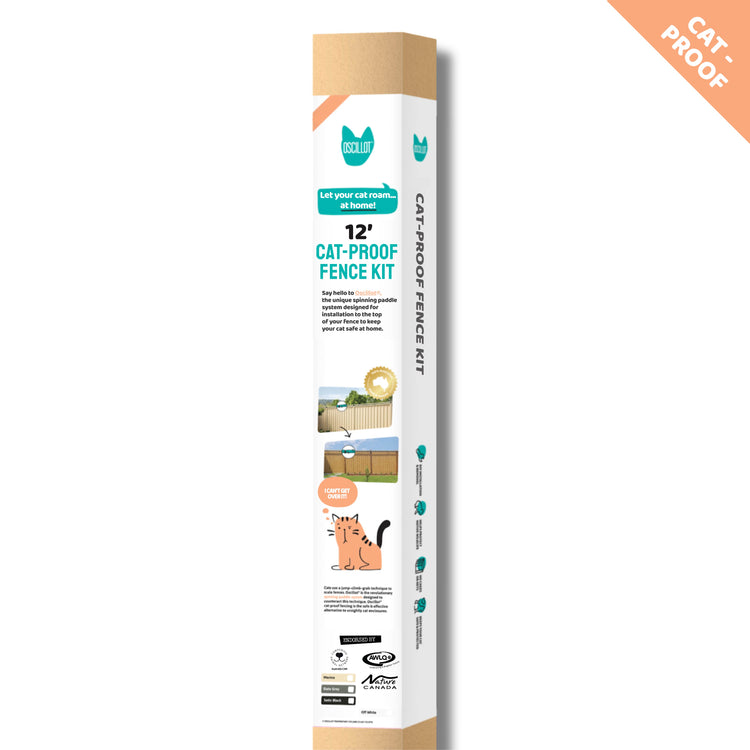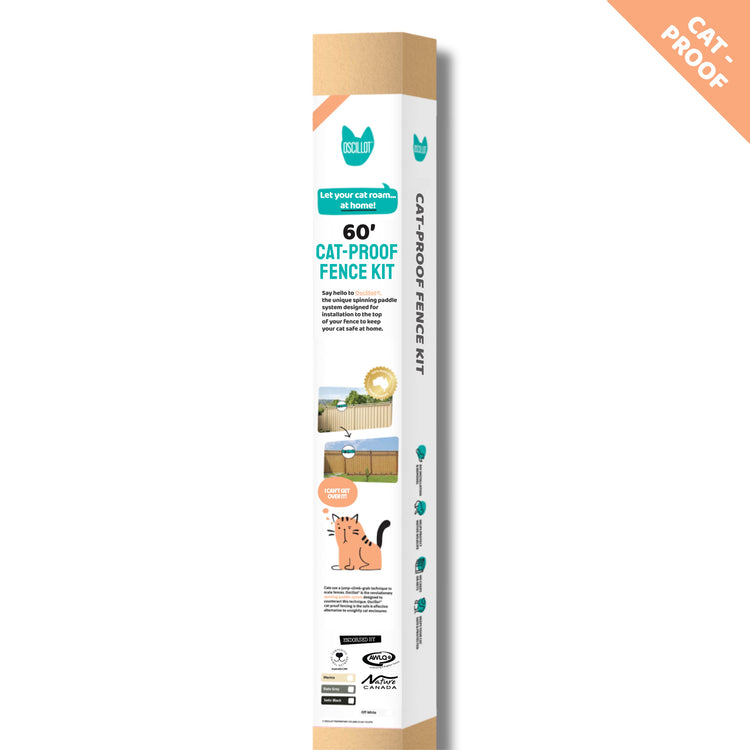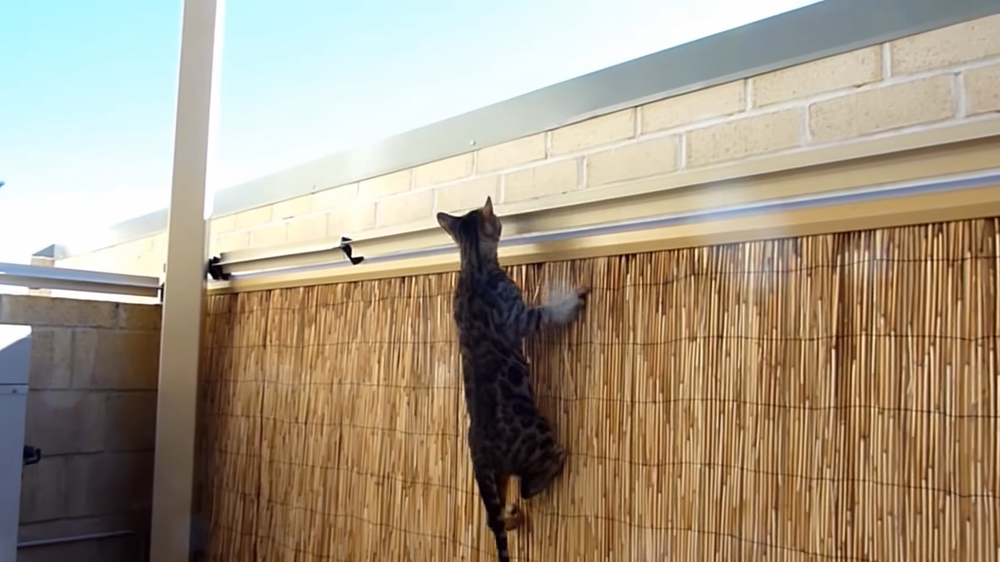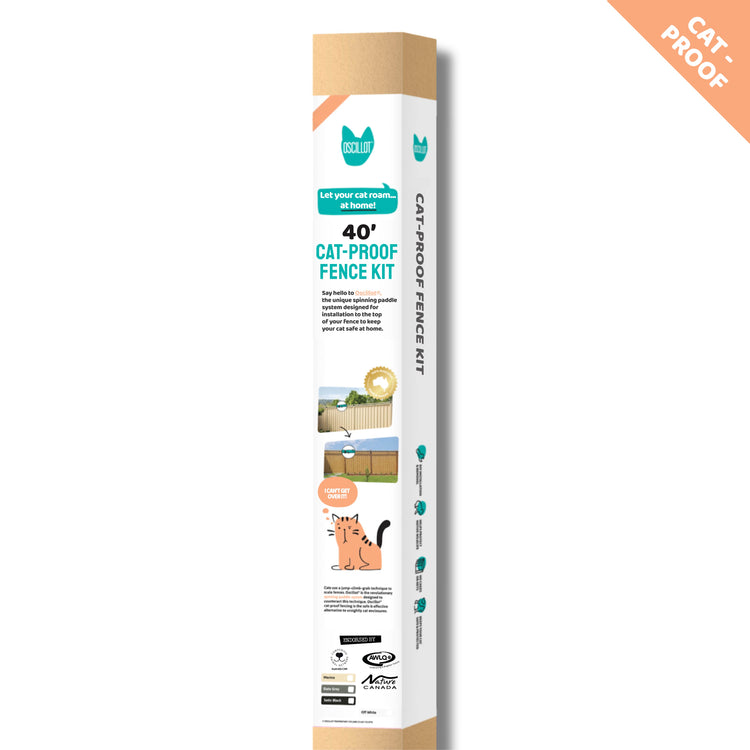12 Common Mistakes in Cat Fence Installation to Avoid

Key Takeaways:
- Proper fence height is crucial for effective cat containment
- Choose durable, weather-resistant materials for longevity
- Ensure secure installation to prevent escape routes
- Regular maintenance is essential for fence effectiveness
- Consider professional installation for complex setups
- Address all potential climbing points in your yard
- Customise your fence system to match your cats' abilities
- Educate family members and visitors about the fence system
At Oscillot, we know how important it is to keep your cats safe while letting them enjoy the outdoors. Our cat-proof fence systems are designed to provide your feline friends with a secure space to roam and explore. However, even with top-notch products, mistakes during installation can significantly reduce your fence's effectiveness.
A well-installed cat fence can transform your pet's life. It offers cats the freedom to experience nature while protecting them from dangers like traffic, predators, or getting lost. By avoiding these installation mistakes, you'll create a secure haven for your furry companions to enjoy the outdoors safely. Let's look at these important mistakes in detail to help make your cat fence installation a success.
Check out our range of cat-proof fence kits1. Not Making the Fence Tall Enough
A big mistake in cat fence installation is underestimating how high cats can jump. Cats are amazing athletes and can leap higher than you might think. Our Oscillot cat-proof fence kits are made for fences that are at least 1.83 meters (6 feet) tall. This height stops most cats from jumping over in one go.
Some super agile cats might need even taller fences. When planning your fence, it's better to go too tall than not tall enough. This way, you're ready for even the most athletic cats. Also, look at the area around your fence. If there are high spots or things cats could use to jump from, you might need to make those parts of the fence taller.
2. Picking the Wrong Materials
Another common mistake is choosing materials that won't last or can't handle weather. How long your cat fence lasts and how well it works depends a lot on what it's made of. When setting up a cat fence, you need to pick materials that can stand up to things like strong sunlight, heavy rain, strong winds, and big temperature changes. Our Oscillot systems are made with materials chosen specifically to handle these tough conditions.
Our paddles and posts are made from tough, UV-resistant plastic and strong aluminum. These materials are picked because they stay strong and work well in all kinds of weather, from really hot summers to cold winters. When you're choosing materials for your cat fence, think about the long-term. Good quality materials might cost more at first, but they last longer and need fewer repairs. This saves you money over time and keeps your cats safe year after year.
3. Not Installing the Fence Correctly
Even the best fence system won't work right if it's not put up correctly. Bad installation can create weak spots in your cat fence that clever cats might find and use to escape. That's why we at Oscillot give clear, easy-to-follow instructions with our DIY kits. We want to make sure every part is installed right so the fence works as well as it can.
It's really important to follow these installation steps carefully, especially when attaching important parts like the paddles and posts. Rushing or taking shortcuts can make your whole fence system less effective. We suggest taking your time, reading all the instructions before you start, and checking your work at each step. Make sure all parts are firmly attached, gaps are sealed properly, and the system is level and lined up right all the way around. Remember, a well-installed fence isn't just about keeping cats in; it's about giving them a safe outdoor space to enjoy without any risks.
4. Forgetting About Climbing Points
Cats are natural climbers and can scale many surfaces. A big mistake in cat fence installation is not spotting and dealing with things cats could climb to get over the fence. These could be trees near the fence, outdoor furniture, garden structures, or even parts of your house close to the fence.
For trees near your fence, think about using our Cat Tree Guard. This cone-shaped device stops cats from climbing up trees and using them to jump over your fence. It's important to look at your yard like a cat would. Look for anything they could use as steps or climbing aids. Once you find these potential escape routes, plan to remove them, move them away from the fence, or use extra deterrents like our Cat Tree Guard. Remember, cats are smart and persistent. What might not look like an obvious climbing spot to you could be an exciting challenge for your cat. By dealing with these climbing points, you make your cat-proof fence system much more effective.
5. Not Securing Gates Properly
Gates are often the weak link in a cat-proof fence if they're not secured properly and made part of the overall design. Many cat owners focus on the fence itself but forget how important gate security is. This mistake can create an easy way out for smart, watchful cats, potentially making your whole containment system less effective.
Our smaller kits, like the 3.7 Metre Cat-Proof Fence Kit, are great for securing gates and small openings in your yard, making sure all entry and exit points are protected. When cat-proofing gates, make sure the gate closes securely and has the same cat-deterrent features as the rest of your fence. This might mean making the gate taller, putting our Oscillot system on the gate itself, and checking there are no gaps or weak spots where the gate meets the fence posts. It's also important to teach all family members and regular visitors about keeping the gate closed all the time. Think about adding a self-closing mechanism or an alarm that tells you when the gate is left open. By giving gates the same attention as the rest of your fence, you create a complete and reliable system to keep your cats safe.
6. Thinking All Cats Are the Same
A common mistake in cat fence installation is thinking that one solution will work for all cats. In reality, cats have different physical abilities and behaviours that affect how they interact with a containment system. Some cats are exceptional jumpers who can clear heights that would stop most other cats, while others might be good at squeezing through small gaps or figuring out clever ways around obstacles.
Our larger kits, like the 18.6 Metre Cat-Proof Fence Kit, offer lots of coverage, which is great for yards with multiple cats that have different abilities. When planning your cat fence, it's important to think about your specific cats. Consider how high they can jump, how well they climb, and their general behaviour patterns. For especially agile or determined cats, you might need to add extra deterrents or make your fence taller than usually recommended. For cats that are good at squeezing through small spaces, pay extra attention to sealing potential gaps and weak points in the fence structure. By tailoring your fence design to your cats' unique abilities, you create a more effective and reliable containment system. Remember to watch your cats' behaviour in the yard before and after installation. This can give you valuable insights into any adjustments or reinforcements you might need to make sure the fence works well for all your cats.
7. Skipping Regular Checks and Fixes
A big mistake many cat owners make after installing a cat-proof fence is not doing regular maintenance and checks. It's easy to think that once the fence is up, your work is done. But weather, wear and tear, and your cats constantly trying to find weak spots can all make your fence system less effective over time.
Setting up a routine for regular fence checks is really important to keep it working well. We suggest walking around your fence at least once a month. Look closely for any signs of damage, loose parts, or areas where the ground might have shifted, possibly creating gaps under the fence. Check for any wear on the Oscillot paddles, make sure all brackets and fasteners are still secure, and look for any new potential climbing aids that might have grown or been placed near the fence. Fix any problems you find during these checks right away. Small issues, if left alone, can quickly turn into bigger vulnerabilities that your cats might use to escape. For more detailed advice on maintaining your cat-proof fence, check out our blog post on cat-proofing your fence. This resource gives valuable tips on keeping your system in top condition, ensuring it stays effective in keeping your cats safe and contained for a long time.
8. Underestimating Your Cat's Determination
One of the biggest errors in cat fence installation is underestimating how persistent and clever cats can be when trying to explore beyond their boundaries. Many cat owners mistakenly think their cats will quickly accept the new limits set by a fence. However, cats are known for their curiosity and determination, often seeing new barriers as challenges to overcome rather than absolute boundaries.
Our blog post on cat fence solutions talks about different ways to keep cats contained, including the benefits of our Oscillot system. When choosing a containment solution, it's important to think not just about the average cat, but about the most determined and clever cat in your home. Cats might spend a lot of time testing the fence for weaknesses, trying different ways to get past it. This persistence means that any small flaw in the fence design or installation could eventually be found and used by your cat. To counter this, think about using multiple deterrent features in your fence design. This might include combining our Oscillot system with other visual deterrents or creating a space near the fence that's less appealing for cats to approach. Remember, it's always better to overestimate your cat's abilities and create a more secure environment than necessary, rather than risking an escape because you underestimated what your fence needed to do.
9. Not Checking Local Rules
An important step often forgotten when planning a cat fence is checking local regulations and zoning laws. Not doing this can lead to big problems later, possibly resulting in fines, forced changes, or even having to remove your newly installed fence. Different areas have different rules about fence height, materials, placement, and even how it looks, especially in places with homeowners' associations or historic districts.
While our Oscillot products are designed to follow most standard fencing rules, it's important to check the specific rules in your area before you start installation. Contact your local city planning office, zoning department, or homeowners' association to ask about any restrictions or permit requirements for changing or adding to fences. Some areas might have specific rules about animal containment systems or limits on the types of materials you can use. By doing this research upfront, you can make sure your cat fence not only keeps your pets contained effectively but also follows all local rules. This proactive approach can save you time, money, and potential legal headaches in the future, letting you enjoy your cat-proof fence without worries.
10. Poor Planning for Your Yard's Layout
Every yard is unique, and not accounting for its specific features in your cat fence planning can lead to ineffective coverage or wasted materials. The layout of your property, including its shape, changes in terrain, existing structures, and landscaping elements, all play important roles in determining the most effective fence design and installation strategy.
Our 12.4 Metre Cat-Proof Fence Kit offers flexibility for various yard layouts, but proper planning is still essential. Before buying or installing any fencing parts, take time to thoroughly assess your yard. Make a detailed map or diagram of your property, noting all potential escape routes, challenging areas (like corners or uneven ground), and spots where cats might be particularly drawn to explore. Think about how your fence will work with existing structures like sheds, garages, or pergolas. These might need special attention to ensure they fit seamlessly with your cat-proof system. Also, consider any future landscaping plans or potential property changes that might affect how well your fence works. By carefully planning your fence layout to address your yard's specific characteristics, you'll use materials more efficiently and create a more comprehensive and effective containment system for your cats.
11. Trying to Do Everything Yourself
While our DIY kits are designed to be easy to install, some yard setups or fence projects might be too complex for the average homeowner to handle alone. A common mistake is underestimating how complicated the installation process can be, especially in yards with tricky terrain, lots of obstacles, or existing fences that need big changes.
If you're not sure about any part of the installation process, or if your yard has unique challenges, it's smart to think about get professional help. Experienced installers can give valuable insights on how to make your fence design better, make sure proper installation techniques are used, and often finish the project more quickly and efficiently than a DIY approach. They can also help navigate any local building codes or permit requirements you might run into. While professional installation might cost more at first, it can save you money in the long run by avoiding mistakes that could make your fence less effective or need expensive repairs. Remember, the goal is to create a safe, secure environment for your cats, and sometimes that means recognising when expert help is needed to get the best results.
12. Not Telling Others About the Fence
After spending time and effort installing a cat-proof fence, it's surprisingly easy to forget to tell others about it and how it works. Not informing family members, regular visitors, or even new pet sitters about the fence system can lead to accidental security breaches, potentially putting your cats at risk.
Make it a priority to thoroughly explain how the cat-proof fence works to everyone who regularly uses your yard. This includes showing the proper way to use gates, pointing out any areas that need special attention, and stressing the importance of keeping the fence intact. Create clear guidelines for visitors, such as always closing gates securely and not changing any part of the fence system. Consider putting up visible reminders or signs near entry points to reinforce these rules. For pet sitters or house sitters, leave detailed instructions about the fence system as part of your overall pet care guidelines. By making sure everyone who interacts with your yard understands the purpose and operation of your cat-proof fence, you create a community of awareness that greatly enhances the effectiveness of your containment system and the safety of your feline friends.
Conclusion
Avoiding these common mistakes will greatly improve how well your cat-proof fence works and how long it lasts. At Oscillot, our goal is to provide cat owners with reliable solutions that let their feline friends enjoy the outdoors safely. Remember, successful cat containment isn't just about the products you use, but also about careful planning, correct installation, and ongoing maintenance.
By carefully considering each of these aspects – from choosing the right fence height and materials to educating others about your fence system – you're creating more than just a barrier; you're establishing a safe, enriching outdoor environment for your cats. This thoughtful approach allows your pets to experience the joys of nature while giving you peace of mind about their safety. If you have any questions about using our Oscillot system or need advice on customising a solution for your specific needs, don't hesitate to contact our team. We're here to help you create the perfect outdoor haven for your feline companions.
Explore our full range of cat-proof fence solutions


